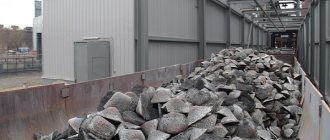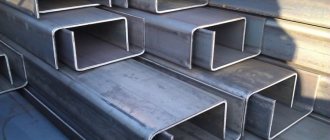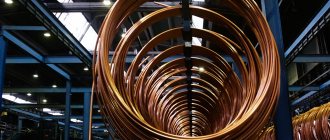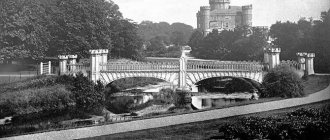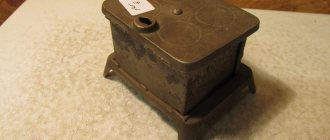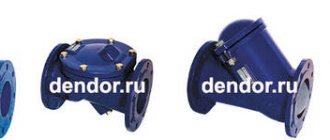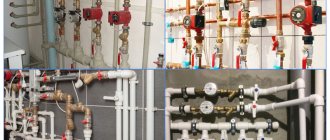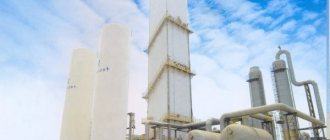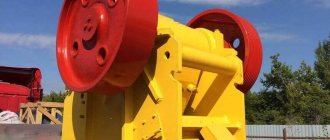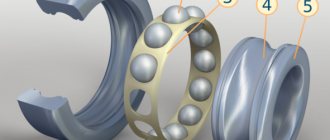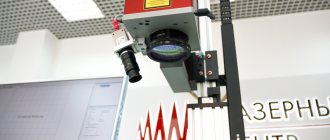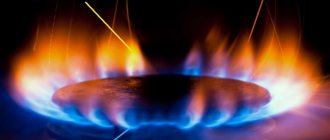Properties of gray cast iron
The properties of this material have ensured its widespread use in mechanical engineering. It crystallizes at fairly low temperatures, exhibits low shrinkage, and retains high fluidity in the liquid state. Its casting properties are rated as high. Gray cast iron serves as the main material for cylinders and pistons of a wide variety of mechanisms, machine beds, etc. The tendency of this type of cast iron to crack during welding necessitates the need for special care when working with workpieces. Quite often practiced, bleaching cast iron used during welding, on the one hand, makes it harder, and on the other, eliminates any possibility of its mechanical processing.
There are also types of gray cast iron that cannot be welded at all. In particular, the so-called burnt cast iron, which has undergone prolonged exposure to elevated temperatures, has been treated with acids or hot steam.
How does the chemical composition of gray cast iron affect its characteristics?
The graphitization of cast iron is directly related to the presence of the following basic elements in it.
Carbon
The higher the percentage of carbon content in gray cast iron, the less strong, hard and elastic it is. On the other hand, carbon helps to improve its properties such as cyclic viscosity and plasticity. In other words, achieving certain strength indicators reduces its casting properties. The optimal percentage of carbon in the composition of gray cast iron is 2.4-4.2%.
Silicon
Silicon has exactly the same effect on the graphitization process as carbon. But at the same time, it is capable of radically changing the mechanical properties of gray cast iron, since it forms a solid compound with ferrite and increases its hardness and reduces viscosity.
The cumulative effect of silicon allows the mechanical characteristics of gray cast iron to be varied, and an increase in its concentration in the alloy leads to an increase in graphite inclusions and ferrite volume. At the same time, the strength of cast iron and its ductility decrease (due to the formation of silicoferrite). As for hardness, as the percentage of silicon increases, it first decreases, then increases again due to the formation of silicoferrite. As a rule, the ability of silicon and carbon to change the mechanical characteristics of cast iron is considered together, and for this purpose their total content is taken into account. In the process of more accurate calculations, the so-called carbon equivalent.
Sulfur
Fe-FeS eutectic has the ability to reduce the ductility and strength of gray cast iron by weakening the grain boundaries, and also promote perlitization of its structure. Thanks to this, the hardness and strength of ferritic and ferritic-pearlitic alloys increase, which become more wear-resistant.
Manganese
Manganese tends to retard graphitization, alloy ferrite, crush pearlite, and promote the appearance of free carbides. When interacting with sulfur, this element neutralizes its harmful effects. It is for this reason that the percentage of manganese in gray cast iron is dictated by the sulfur content. Low-sulfur cast irons, accordingly, contain a lower percentage of manganese.
Phosphorus
The role of phosphorus is to alloy ferrite, facilitate grain refinement and form phosphide eutectic inclusions. The more phosphorus contained in gray cast iron, the harder and more wear-resistant it is.
Chromium
An increase in chromium content in cast iron leads to an increase in their hardness and strength, but this process is most clearly visible in modified cast iron. Chromium's ability to retard graphitization makes it a carbide-forming element. Thin sections with increasing chromium content demonstrate a more obvious increase in hardness than thick ones.
Nickel
This element is capable of leveling the mechanical characteristics of cast iron castings of various thicknesses. In cases where the percentage of nickel in gray cast iron exceeds 3%, the castings exhibit the same strength values with wall thicknesses in the range of 22-88 mm. With an increase in the inclusion of nickel by 1%, the hardness of gray cast iron increases by approximately 10 HB. At the same time, cast iron’s ability to resist corrosion and aggressive alkaline environments increases. It is also important that nickel helps improve the machinability of gray cast iron and its tightness (thanks to it, graphite takes on a favorable shape while simultaneously reducing the grain size).
Molybdenum
This element slows down graphitization and is considered an active carbide-forming substance, leading to an increase in the hardness and strength of gray cast iron. Each additional percentage of molybdenum increases strength by 1 kg/mm2. It is characteristic that in this case the impact strength does not decrease, but, on the contrary, increases. At high temperatures, Mo strengthens the strength of cast iron, and the most effective result can be achieved with the inclusion of 1.9% Mo. Its higher concentration leads to the formation of ledeburite and a decrease in strength. Molybdenum makes cast iron more wear-resistant.
Copper
The dual effect of copper on cast iron is to accelerate graphitization and the formation of pearlite. The higher the percentage of copper in the alloy, the lower the shrinkage and the higher the fluidity of gray cast iron. As the amount of copper increases, its elastic modulus, hardness and strength also increase.
Cuprous cast iron is easier to process than unalloyed cast iron. If you add copper to cast iron alloyed with molybdenum, vanadium, and chromium, it will become less hard and less brittle. Thanks to copper, thin-plate perlite is formed, and the resistance of cuprous cast iron to corrosion increases. Eutecticity has a significant influence on tensile strength and hardness.
Tin
This element is capable of increasing the strength, hardness and elasticity modulus of cast iron when its content in the alloy is up to 0.1%. At the same time, the tendency of gray cast iron to whiten increases, and in order to avoid such a situation, the tin content in it is set at 0.05-0.08%. When choosing between two alloying elements - tin and chromium - experts recommend using tin, which gives the cast iron uniform hardness across different sections and reduces the formation of scale.
Antimony
This element, like tin, counteracts the formation of free ferrite, but performs its role more effectively with a Sb content of 0.015%. At the same time, a lower concentration of the element (0.03-0.08%) contributes to good alloying of gray cast iron. If Sb is contained in cast iron in a concentration of up to 0.1%, its strength increases until a purely pearlite structure is achieved. However, a further increase in the Sb concentration leads to a decrease in strength, since antimony affects the crystallization processes of the metal base, but does not distribute graphite inclusions and does not affect the shape. As for impact strength, when doped with Sb, this indicator decreases. Also, increasing the percentage of antimony reduces the sensitivity of gray cast iron to wall thickness.
Bor
Boron, provided that it is added to cast iron in small quantities, has a graphitizing effect on it and apparently increases impact strength and deflection. A higher concentration of this element leads to a decrease in visco-plastic properties and an increase in strength.
If you choose the optimal ratio of boron and silicon, you can achieve a uniform distribution of the cementite mesh based on perlite, and in a wide range of wall thicknesses and eutecticity of gray cast iron. It is possible to achieve a cast iron hardness of 260 HB by varying the concentration of introduced boron. The addition of boron and aluminum has approximately the same effect on the characteristics of gray cast iron. The industrial significance of alloying cast iron with boron is the possibility of imparting high wear resistance to it without loss of machinability.
In practice, complex alloying is usually used, when not one, but several different elements are introduced into gray cast iron.
Classification
Cast iron is classified on several grounds:
- According to the dimensions and shape of graphite inclusions. Layered, spheroidal, vermicular, flakes.
- By type of carbon. Graphite, cementite.
- According to production technology. Grey, white, reworked.
- Based on the presence of additives. Ordinary and alloyed. Alloyed are alloys of cast iron with metals (molybdenum, nickel, chromium, titanium, etc.). Alloys with such metals give products ductility, resistance to wear, destruction, and corrosion.
Microstructure of white cast iron
Product characteristics are established at the production stage.
Varieties
There are white and gray cast iron.
- The carbon in white cast iron is in the form of iron carbide. If you break it, you can see a white tint. White cast iron is not used in its pure form. It is added to the process of producing malleable iron.
- At a fracture, gray cast iron has a silvery tint. This type of cast iron has a wide range of uses. It lends itself well to processing with cutters.
In addition, cast irons are high-strength, malleable and with special properties.
- High-strength cast iron is used to increase the strength of the product. The mechanical properties of such cast iron allow this to be done perfectly. High-strength cast iron is obtained from gray cast iron by adding magnesium to the mass.
- Ductile iron is a type of gray iron. The name does not mean that this cast iron is easily forged. It has increased plasticity properties. It is obtained by annealing white cast iron.
- There is also a distinction between half cast iron. Some of the carbon in it is in the form of graphite, and the remaining part is in the form of cementite.
Composition and types of white cast iron
White cast iron consists of the so-called cementite eutectic. In this regard, it is divided into three categories:
- Hypoeutectic. These are alloys in which carbon does not exceed 4.3% of the total composition. It is obtained after complete cooling. As a result, it acquires the characteristic structure of such elements as pearlite, secondary cementite and ledeburite.
- Eutectic. Their carbon content is 4.3%.
- Hypereutectic white cast iron. The content exceeds 4.35% and can reach 6.67%.
In addition to the above classification, it is divided into ordinary, bleached and alloyed.
The internal structure of white cast iron is an alloy of two elements: iron and carbon. Despite high-temperature production, it retains a fine-grained structure. Therefore, if you break a part made of such metal, a characteristic white color will be observed. In addition, in the structure of a hypoeutectic alloy, for example, hard grades, in addition to pearlite and secondary cementite, cementite is always present. Its percentage can approach 100%. This is typical for a eutectic metal. For the third type, the structure is a composition of eutectic (Ep) and primary cementite.
One of the varieties of such alloys is the so-called bleached cast iron. Its basis, that is, the core, is gray or high-strength cast iron. The surface layer contains a high percentage of elements such as ledeburite and perlite. The whitening effect up to 30 mm deep is achieved using the rapid cooling method. As a result, the surface layer is white, and then the casting consists of an ordinary gray alloy.
White cast iron structure
Depending on the percentage of alloyed additives, the following types of metal are distinguished:
- low-alloyed (they contain no more than 2.5% alloying elements);
- moderately alloyed (the percentage of such elements reaches 10%);
- highly alloyed (in them the amount of alloying additives exceeds 10%).
Quite common elements are used as alloying additives. The alloyed white cast iron obtained in this way acquires new, predetermined properties.
Properties of white cast iron
Any cast iron alloy, on the one hand, is very strong, but at the same time it is quite brittle. Therefore, the main positive properties of white cast iron include:
- High hardness. This greatly complicates the processing of parts, in particular cutting.
- Very high resistivity.
- Excellent wear resistance.
- Good resistance to increased heat.
- Sufficient corrosion resistance, including to various acids.
White cast irons, with a reduced percentage of carbon, are more resistant to high temperatures. This property is used to reduce the number of cracks in castings.
Appearance of white cast iron
The disadvantages include:
- Low casting properties. It has poor mold filling. During pouring, internal cracks may form.
- Increased fragility.
- Poor machinability of castings and parts made of white cast iron.
- Large shrinkage, which can reach 2%.
- Low impact resistance.
Another disadvantage is poor weldability. Problems in welding parts made of this material are caused by the fact that during welding, cracks form, both during heating and cooling.
Marking of white cast iron
To mark white cast iron, letters of the Russian alphabet and numbers are used. If it contains impurities, then the marking begins with the letter “H”. The composition of the available alloying additives can be determined by the following letters P, PL, PF, PVK. They indicate the presence of silicon. If the resulting metal has increased wear resistance, then its marking will begin with the letter “I”, for example ICHH, ICH. For example, the presence of the designation “Ш” in the marking means that the alloy structure contains spherical graphite.
The numbers indicate the amount of additional substances present in white cast iron.
Brand CHN20D2ХШ is deciphered as follows. This is a heat-resistant high-alloy metal. It contains the following elements: nickel - 20%, copper - 2%, chromium - 1%. The remaining elements are iron, carbon, and spherical graphite.
Welding gray cast iron
Welding cast iron is usually resorted to in the following cases:
- if necessary, restore worn parts of various mechanisms;
- in the manufacture of components and parts of a combined type, consisting of cast iron and cast iron in combination with other alloys;
- when eliminating various types of casting defects.
For welding gray cast iron, various methods are used: electric arc, gas, and also electric contact (if necessary, weld parts made of cast iron and copper, bronze, brass).
Performance characteristics of gray cast iron
One of its most important qualities is wear resistance, which is expressed by the rate of metal loss and is measured in weight and linear units.
Wear resistance
In turn, wear can be abrasive (occurring during dry friction) and erosion-cavitation (occurring during friction with lubricant).
In the case of gray cast iron, wear resistance depends on such indicators as structure and hardness. High wear resistance is characterized by those types in which the sizes of graphite inclusions are minimal. At the same time, ferrite in the structure of gray cast iron demonstrates its beneficial properties only at low speeds and low pressure (with rolling friction and constant rotation in one direction). As practice shows, with sliding friction and multilateral rotation, the advantages remain with the pearlitic structure of gray cast iron.
Wear resistance also depends on hardness (as this indicator increases, wear resistance increases). Parts subject to constant impact and abrasive wear must have high hardness. For this purpose, alloying of gray cast iron is used.
Tightness
This indicator is expressed by the leak rate, pressure reduction and changes in boundary parameters, and the appearance of a leak. Cast iron parts operating under gas or liquid pressure must have high tightness: pipelines, fittings, elements of pneumatic brake systems, hydraulic drive equipment, tanks, compressor and pump castings.
The presence of shells and micropores in the structure of gray cast iron contributes to a decrease in tightness. It is especially important to avoid the so-called casting. transit microporosity, i.e. pores communicating with each other.
Areas of use
Cast iron is common in many areas.
- It is used for the production of parts in mechanical engineering. Engine blocks and crankshafts are mainly made from cast iron. The latter require advanced cast iron, to which special graphite additives are added. Due to the resistance of cast iron to friction, it is used to make excellent quality brake pads.
- Cast iron can operate smoothly even at extremely low temperatures. Therefore, it is often used in the production of machine parts that will have to work in harsh climatic conditions.
- Cast iron has proven itself well in the metallurgical field. It is valued for its relatively low price and excellent casting properties. Products made from cast iron are characterized by excellent strength and wear resistance.
- A large variety of plumbing products are made from cast iron. These include sinks, radiators, sinks and various pipes. Cast iron bathtubs and heating radiators are especially famous. Some of them still serve in apartments today, although they were purchased many years ago. Cast iron products retain their original appearance and do not require restoration.
- Thanks to its good casting properties, cast iron produces real works of art. It is often used in the manufacture of artistic products. For example, such as beautiful openwork gates or architectural monuments.
White cast iron
Carbon cementite is formed due to instantaneous cooling. Recognized by the whitish color of the fracture, hardness, and fragility. The alloy is unsuitable for machining by cutting. It is used for solid wear-resistant casting (rolling rolls, parts of mill and crushing mechanisms) and as a source of malleable types of cast iron.
Microstructure of white cast iron at 100x magnification
Grey
The basis of the structure is layered graphite, which imparts a grayish tint. It can be machined, but its strength and ductility are low.
Advantages: good anti-friction, damping properties, mini-sensitivity to voltage batteries, fluidity, minimum defects during shrinkage.
It is used as a material for castings of complex configurations with wall thicknesses up to 5 cm.
It is used to make rolling mills, flywheels, columns, frames, and sewer and water supplies (manholes, pipes, fittings).
Cast iron manhole cover
Malleable
The result of heat treatment of white cast iron with flake graphite. This structure ensures strength, ductility, good machinability of castings, and the absence of internal stress.
Thanks to this, the alloy has found application as a material for parts and elements operating under conditions of shock and vibration: pedestals for massive equipment, supports for highways, railway bridges, diesel engine crankshafts.
The Severn Bridge - the world's first cast iron bridge
Half-hearted
An intermediate material between the first two varieties is half-cast iron. The carbon it contains is presented in the form of graphite and carbide in approximately equal proportions. In addition, such an alloy may contain small amounts of lideburite (no more than 3%) and cementite (no more than 1%). The total carbon content of half cast iron ranges from 3.5 to 4.2%. This variety is used for the production of parts that are operated under conditions of constant friction. These include automobile brake pads, as well as rolls for grinding machines. To further increase wear resistance, all sorts of additives are added to the alloy.
High strength
This type of cast iron is obtained due to the formation of spherical graphite inclusions in the metal lattice. Because of this, the metal base of the crystal lattice weakens, and the alloy acquires improved mechanical properties. The formation of spherical graphite occurs due to the introduction of magnesium, yttrium, calcium and cerium into the material. High-strength cast iron is close in its parameters to high-carbon steel. It lends itself well to casting and can completely replace steel parts of mechanisms. Due to its high thermal conductivity, this material can be used for the manufacture of pipelines and heating devices.
Special
Alloys with additional characteristics obtained by alloying, annealing and cooling using special technology.
Divided into:
- ferroalloys;
- corrosion-, wear-, heat-resistant;
- antifriction;
- with electromagnetic properties;
- decorative.
The composition of alloys and technology are regulated by standards.
High-strength grades become the mechanism of turbines, crankshafts, tractor and automobile engines, gears, and rolling rolls.
Anti-friction grades are used for bearings, fuel pump bushings, valves, and piston rings for cars.
Fences, columns, fountains, and small plastic items are forged from decorative ones.
Cast iron fence
Peredelny
A semi-finished product, a source for processing into steel or creating castings. The percentage of phosphorus, silicon, sulfur, manganese components in the alloy is regulated by the industry standard.
Depending on the purpose and percentage of silicon, pig iron for steelmaking, foundry production, phosphorous, and high-strength are distinguished.
The latter type of alloy contains graphite beads and magnesium. Used for the production of parts operating under extreme loads (mechanical and thermal) in aggressive environments.
